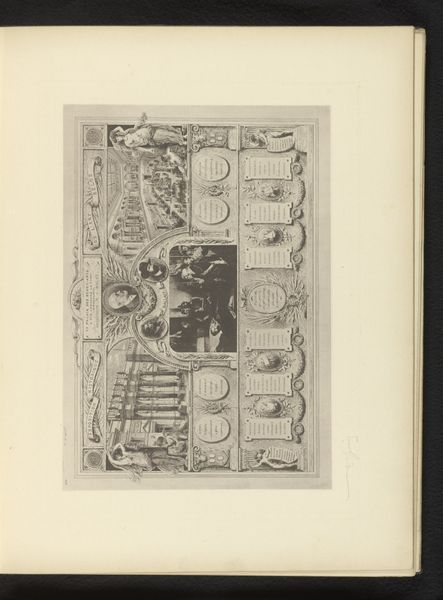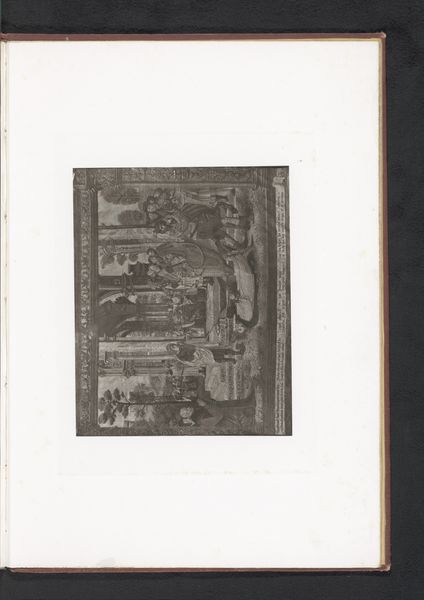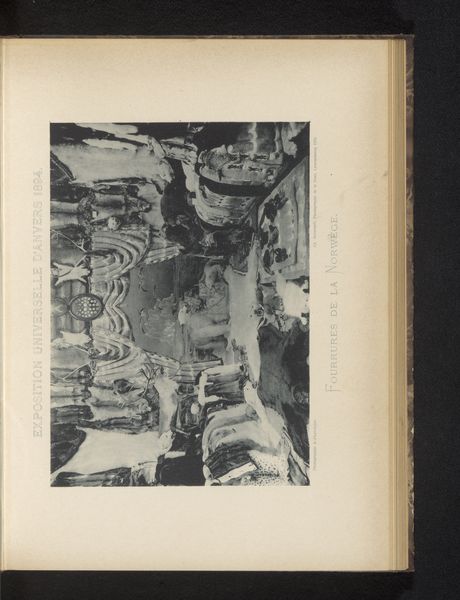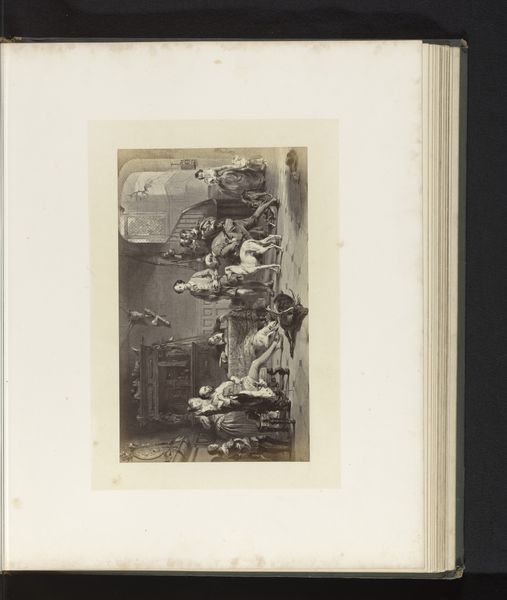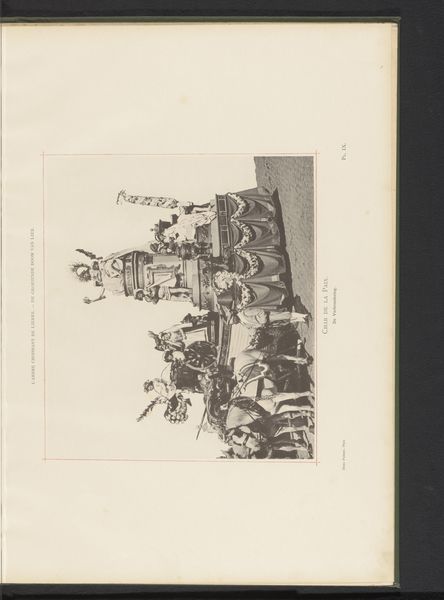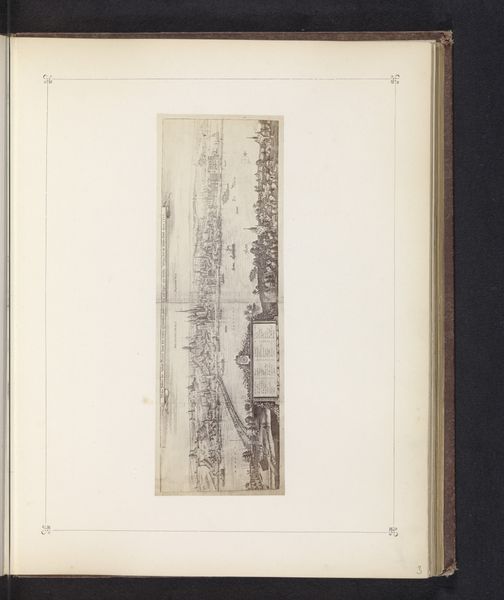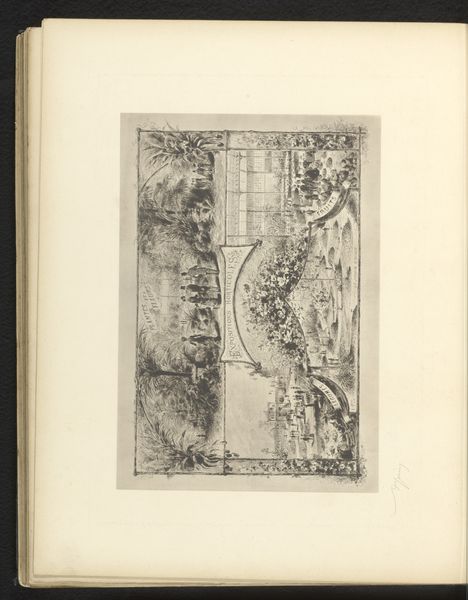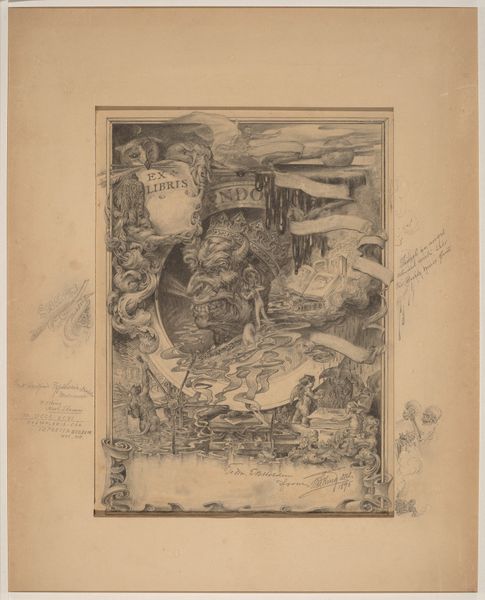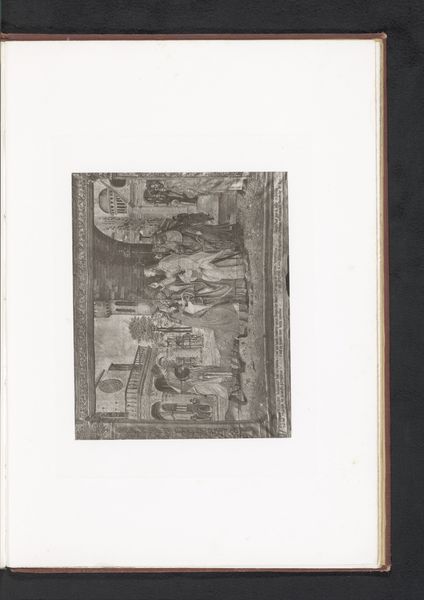
Reproductie van een gravure van verschillende soorten dieren, getoond op de Exposition Nationale van 1880 in Brussel, door Armand Heins 1881 - 1882
0:00
0:00
print, etching, ink, engraving
#
ink drawing
#
pen drawing
# print
#
etching
#
ink
#
genre-painting
#
engraving
Dimensions: height 221 mm, width 302 mm
Copyright: Rijks Museum: Open Domain
Curator: At first glance, it presents such a menagerie, almost overflowing with visual information. A world in miniature! Editor: Indeed. This print, created by Armand Heins between 1881 and 1882, documents various animal breeds displayed at the Exposition Nationale of 1880 in Brussels. It’s rendered through engraving, etching, and ink—traditional printmaking techniques that offer incredible detail. Curator: It’s a fascinating look into how a society viewed and presented its relationship with animals at the time. The emphasis on distinct breeds signals a real moment of taxonomic obsession and agricultural progress. I wonder how these exhibitions shaped social values, perhaps reinforcing ideas about selective breeding and hierarchies in the animal kingdom? Editor: The imagery employed certainly echoes a structured worldview. Note how different animals aren't randomly placed, but rather, the composition hints at their uses—draft horses pulling wagons, prize-winning livestock on display. They are symbols of national pride, agricultural advancements and illustrate human dominion. The text integrated is almost as important as the animal representation in revealing the works overall concept. Curator: Looking closely, one sees elements of artistry beyond just documentation. The ornate framing, the careful arrangement…it transforms a catalogue of specimens into something more decorative and celebratory. Were these prints widely distributed, shaping a popular understanding of agriculture? Editor: Most likely. Consider, also, the absence of untamed animals; everything depicted has been brought under human control. The message is clear. It mirrors societal aspirations and values concerning animals and how people saw their relationship to the environment at this historic turning point. These kinds of engravings offer valuable clues to interpreting past times. Curator: I find the level of detail striking, especially considering this was meant to capture a fleeting moment, an exhibition. It suggests a desire for permanence, a need to preserve and showcase what they considered valuable and important, for generations. Editor: Exactly. And these deliberate depictions also speak volumes about what went unspoken or omitted. Through careful examination, we unlock further understanding regarding cultural significance embodied in imagery of years past. Curator: So true. I now see it's a window onto an era's priorities—not just livestock, but society's values cast in printed ink. Editor: I concur; may its symbolism provide guidance for those who pause to reflect on its meaning.
Comments
No comments
Be the first to comment and join the conversation on the ultimate creative platform.

